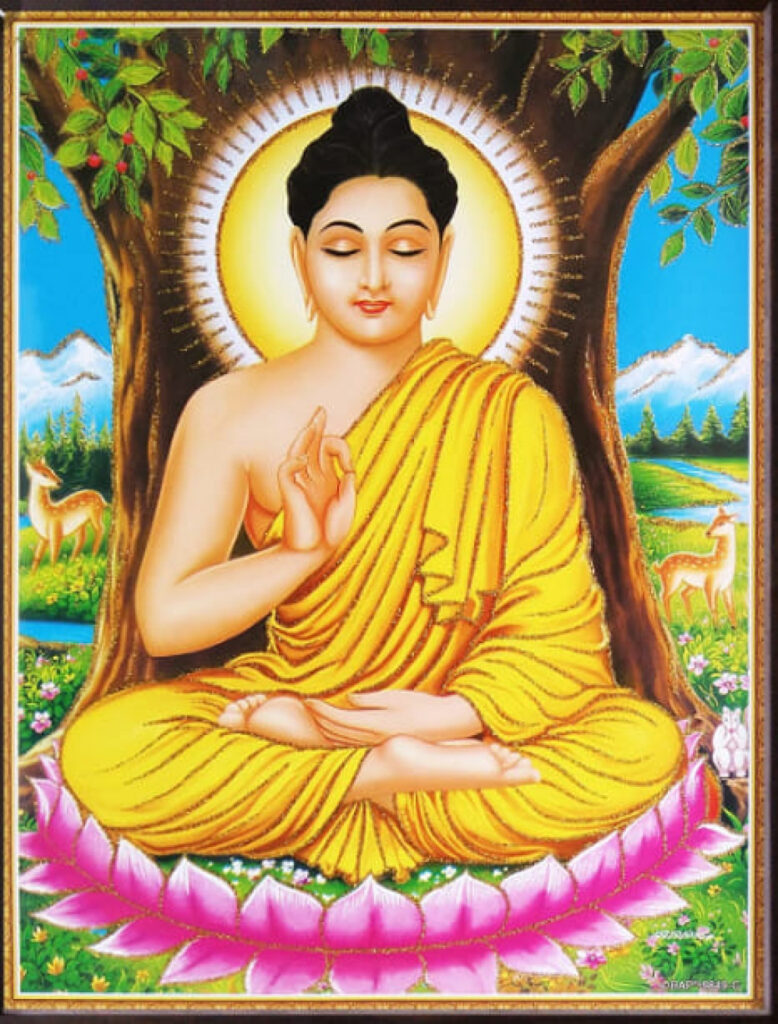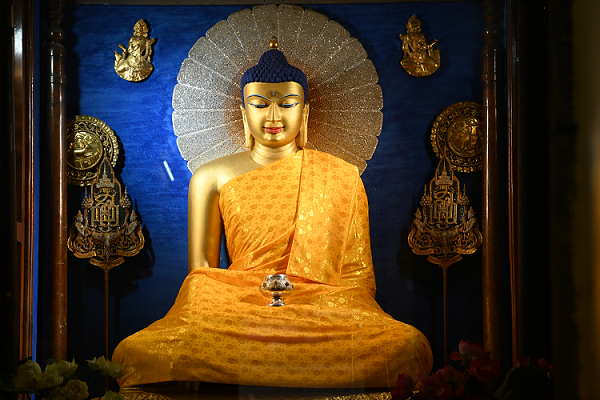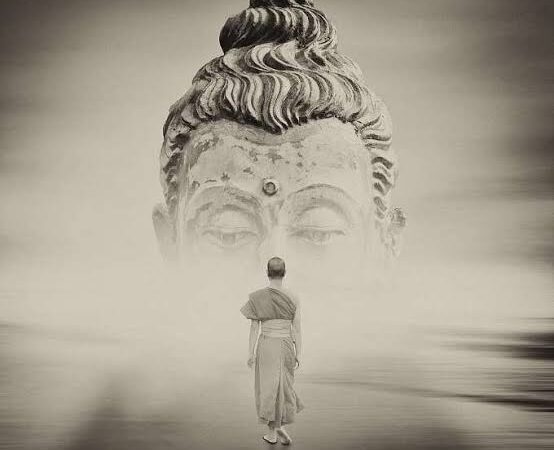Buddhism, a profound and influential spiritual tradition, often intrigues those seeking inner peace and understanding. But what is Buddhism? This article aims to provide a concise yet comprehensive introduction to Buddhism, touching on its origins, teachings, practices, and modern relevance.
The Founder of Buddhism
Early Life of Siddhartha Gautama
Siddhartha Gautama, the founder of Buddhism, was born into a royal family in Lumbini, present-day Nepal, around the 5th century BCE. Sheltered from the harsh realities of life, he lived in luxury until his late twenties. Despite his privileged upbringing, Siddhartha was deeply curious about the world beyond his palace walls.


Quest for Enlightenment
Upon encountering suffering, sickness, and death for the first time, Siddhartha was profoundly moved. Determined to find a way to end human suffering, he renounced his royal life and embarked on a spiritual quest. He studied under various teachers and practiced extreme asceticism but found these methods insufficient for attaining true enlightenment.
At the age of 35, Siddhartha sat in deep meditation under the Bodhi tree in Bodh Gaya, India. After a night of profound insight, he attained enlightenment, understanding the nature of suffering and the path to its cessation. From then on, he was known as the Buddha, or “the Enlightened One.” He spent the remaining 45 years of his life teaching others the path to enlightenment.
Core Beliefs of Buddhism
The Four Noble Truths
1. The Truth of Suffering (Dukkha): Life is inherently filled with suffering and dissatisfaction. This suffering can take various forms, such as physical pain, emotional distress, and existential angst.
2. The Truth of the Cause of Suffering (Samudaya): Life is inherently filled with suffering and dissatisfaction. This suffering can take various forms, such as physical pain, emotional distress, and existential angst.
3. The Truth of the End of Suffering (Nirodha): It is possible to end suffering by relinquishing desire and attachment. This state of liberation and freedom from suffering is known as Nirvana.
4. The Truth of the Path Leading to the End of Suffering (Magga): The Noble Eightfold Path provides the practical steps necessary to achieve liberation from suffering.
The Noble Eightfold Path
1. Right Understanding: Grasping the nature of reality and the path of transformation.
2. Right Intention: Commitment to ethical and mental self-improvement.
3. Right Speech: Speaking truthfully and kindly.
4. Right Action: Ethical conduct and living harmoniously.
5. Right Livelihood: Earning a living in a way that does not harm others.
6. Right Effort: Cultivating positive states of mind.
7. Right Mindfulness: Developing awareness of the body, feelings, and mind.
8. Right Concentration: Developing deep mental focus through meditation.
Buddhist Practices
Meditation

Meditation is central to Buddhist practice, involving techniques such as mindfulness (Vipassana) and concentration (Samatha) to develop awareness and tranquility.
- Mindfulness Meditation (Vipassana): Focuses on developing awareness of the present moment, observing thoughts and sensations without judgment.
- Concentration Meditation (Samatha): Involves focusing the mind on a single object, such as the breath, to develop deep mental tranquility.
Mindfulness
Mindfulness, derived from Buddhist practices, involves being fully present and engaged in the current moment. Everyday mindfulness practices can include mindful eating, walking, and even working.
Ethical Conduct
Ethical conduct is fundamental in Buddhism. Practitioners follow precepts such as refraining from taking life, stealing, engaging in sexual misconduct, lying, and using intoxicants.
Karma
Karma, the law of cause and effect, plays a crucial role in Buddhism. It teaches that our actions have consequences, influencing our current and future lives. Positive actions lead to beneficial outcomes, while negative actions result in suffering.
Wisdom (Prajna)
Wisdom, or Prajna, is the understanding of the true nature of reality, including the impermanence of all things and the interdependent nature of existence. Cultivating wisdom is essential for achieving enlightenment.
Buddhism as a Religion
Rituals and Ceremonies
Buddhist rituals and ceremonies vary by tradition but often include chanting, meditation, and offerings to the Buddha and other deities. These practices help reinforce the teachings and foster a sense of community.
Monastic Life
Monastic life plays a crucial role in Buddhism. Monks and nuns dedicate their lives to studying, practicing, and teaching the Dharma (Buddhist teachings), providing guidance and support to laypeople.
Lay Practices
Lay Buddhists support the monastic community and engage in practices such as meditation, ethical living, and participating in rituals and ceremonies.
Concept of God in Buddhism
Buddhism is unique in that it is non-theistic; it does not center around the worship of a god or gods. Instead, it focuses on the individual’s path to enlightenment. However, different traditions include various deities and spiritual beings, often seen as enlightened beings or bodhisattvas.
Symbols of Buddhism
The Dharma Wheel
The Dharma Wheel, or Dharmachakra, represents the Buddha’s teachings and the path to enlightenment. Its eight spokes symbolize the Noble Eightfold Path.
The Lotus Flower
The Lotus Flower symbolizes purity and enlightenment. It grows in muddy water but rises above it, representing the practitioner’s journey to spiritual awakening.
The Buddha Statues
Buddha statues come in various postures, each with specific meanings. The seated Buddha often represents meditation and enlightenment, while the standing Buddha signifies teaching and compassion.
Sacred Texts of Buddhism
The Tripitaka (Pali Canon)
The Tripitaka, also known as the Pali Canon, is the earliest and most authoritative collection of Buddhist scriptures, containing the teachings of the Buddha. It is divided into three “baskets”: the Vinaya Pitaka (discipline), the Sutta Pitaka (teachings), and the Abhidhamma Pitaka (philosophical analysis).
The Mahayana Sutras
The Mahayana Sutras are a collection of texts that expand upon the teachings of the Pali Canon, introducing new doctrines and practices. Key texts include the Heart Sutra and the Lotus Sutra.
The Tibetan Canon
The Tibetan Canon, comprising the Kangyur (translated words of the Buddha) and Tengyur (commentaries), is central to Vajrayana


Buddhism. It includes unique texts such as the Tibetan Book of the Dead, which provides guidance on the process of dying and the experiences after death.
Spread of Buddhism
Early Spread in Asia
From its origins in India, Buddhism spread throughout Asia, reaching Sri Lanka, China, Japan, Korea, and Southeast Asia. Each region adapted the teachings to fit their cultural contexts, resulting in diverse practices and interpretations.
Buddhism in the Modern World
In recent decades, Buddhism has gained popularity in the West, influencing contemporary spiritual practices and psychology. Mindfulness, derived from Buddhist practices, has been widely adopted in psychological therapies and wellness programs.
Conclusion
Buddhism offers profound insights into the nature of existence and practical methods for achieving peace and happiness. By understanding its core teachings and practices, anyone can begin to explore the transformative potential of this ancient tradition. Whether you seek personal growth, spiritual enlightenment, or a greater sense of community, Buddhism provides a path that is accessible to all.
Learn More About Buddhism
FAQ
What are the main differences between Theravada and Mahayana Buddhism?
Theravada focuses on individual enlightenment through early texts, while Mahayana emphasizes collective liberation and the Bodhisattva ideal.
Can anyone become a Buddhist?
Yes, Buddhism is open to all who seek to understand its teachings and apply its practices.
What role does meditation play in Buddhism?
Meditation is central, helping to develop mindfulness, concentration, and insight into the nature of reality.
How does Buddhism view life after death?
Buddhism teaches rebirth based on karma. Actions in this life influence future lives, and the ultimate goal is to achieve enlightenment and break free from the cycle of rebirth.
What are some common symbols in Buddhism and their meanings?
The Dharma Wheel represents the teachings, the Lotus Flower symbolizes purity and enlightenment, and Buddha statues depict various aspects of the Buddha’s life and teachings.
FOLLOW US ON





The level of my fascination with your work matches your own enthusiasm. Your sketch is elegant, and the authored material is impressive. Nevertheless, you appear concerned about the prospect of heading in a direction that could be seen as dubious. I agree that you’ll be able to address this concern promptly.
Your blog is a breath of fresh air in the often stagnant world of online content. Your thoughtful analysis and insightful commentary never fail to leave a lasting impression. Thank you for sharing your wisdom with us.
“Mind = blown! 🌟 This is exactly the comprehensive breakdown I needed. Your expertise shines through in every paragraph. Thanks for sharing such well-researched content.”
“Outstanding post! The research quality and clarity blew me away. The way you’ve structured each point shows your deep understanding of the topic. I’ve learned so much from your expert insights.”
“Outstanding post! The research quality and clarity blew me away. The way you’ve structured each point shows your deep understanding of the topic. I’ve learned so much from your expert insights.”
I think this internet site has very good indited subject material content.
Pingback: The Origin of Suffering and the Path to Liberation: Mantra of Dependent origination - buddhistpsy.com
Pingback: The Four Immeasurables - buddhistpsy.com
Pingback: The Profound Meaning Behind the Short Refuge Prayer in Buddhism - buddhistpsy.com
Pingback: The Seven Limb Prayer: A Complete Path to Accumulate Merit and Wisdom - buddhistpsy.com
Pingback: The Precious Human Life in Buddhism - buddhistpsy.com
Pingback: Impermanence: Understanding the Nature of Life and Death - buddhistpsy.com
of course like your web-site but you have to check the spelling on quite a few of your posts. Several of them are rife with spelling problems and I find it very troublesome to tell the truth nevertheless I’ll surely come back again.
thanks for your kind feedback. We will be careful next time
Pingback: The Law of Karma: The Cause of Happiness and Suffering - buddhistpsy.com
Hiya, I am really glad I have found this information. Today bloggers publish just about gossips and internet and this is really irritating. A good blog with interesting content, that’s what I need. Thanks for keeping this website, I’ll be visiting it. Do you do newsletters? Can not find it.